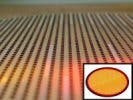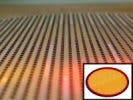It should be realized that specific requirements must be met for developing such high-power LEDs. Most of the electrical input power is converted into heat, making thermal management a key consideration. Also, intelligent optical design of the LED is crucial as this enables increased efficiency and lowers the required electrical power.
While the efficiency of incandescent light sources is traditionally limited by the production of infrared radiation, LEDs are limited in conversion efficiency (electrical to optical) by non-radiative heat generation processes. To avoid damage to the LED's sensitive p/n junction, excellent heat conduction is needed throughout the entire LED assembly to dissipate this thermal energy to the ambient. Considerable effort is spent by LED manufacturers to increase the efficiency of every single component within the package, and all related components are chosen to achieve the highest radiant flux possible.
+++++++
This article was published in the February 2007 issue of LEDs Magazine.
To read the rest of this article, please visit our Magazine page, where you can download FREE electronic PDF versions of all issues of LEDs Magazine.
You can also request a print copy of LEDs Magazine (available by paid subscription).






